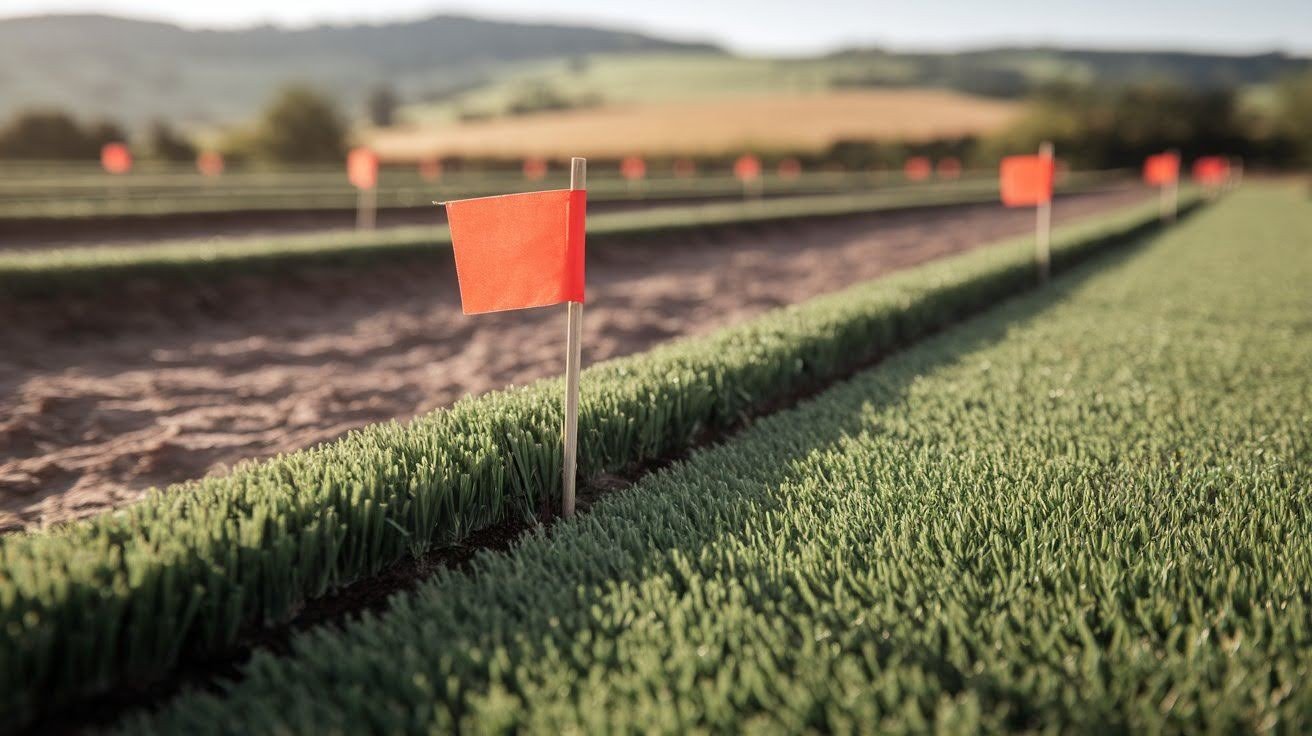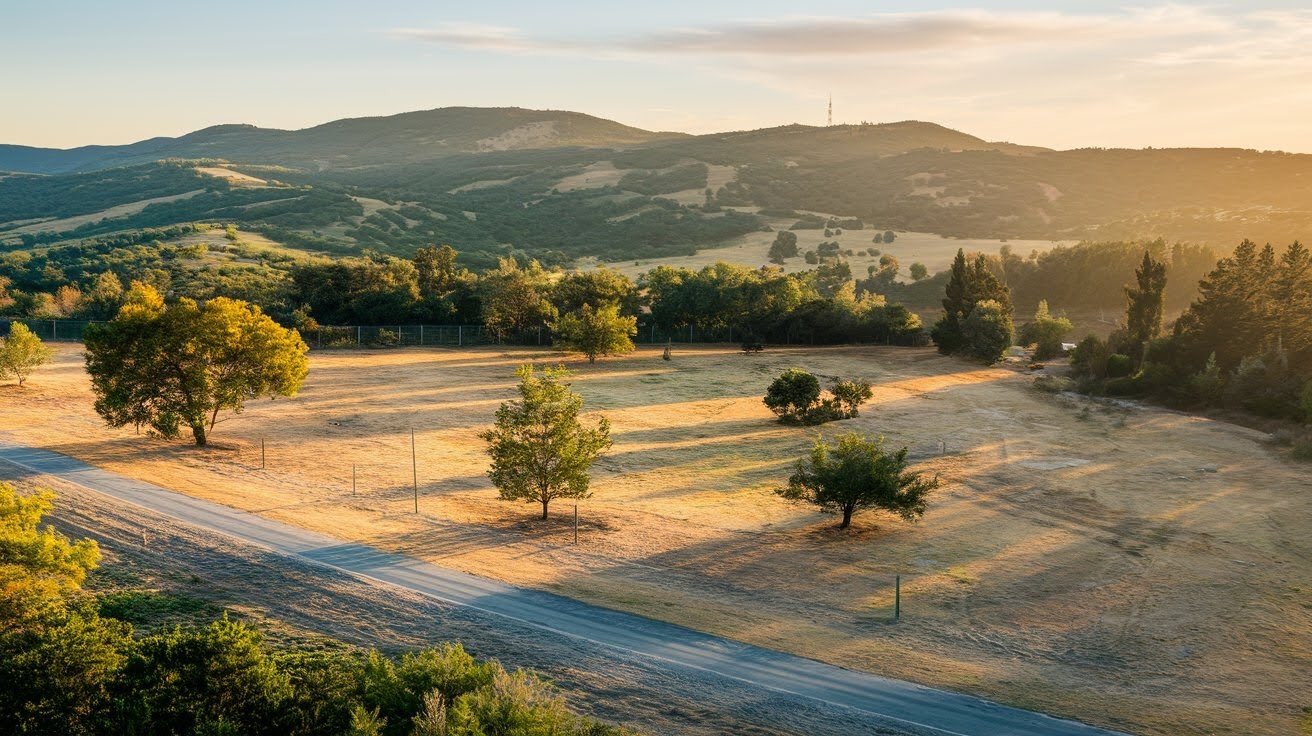By selling land yourself, you can save thousands of dollars in commission fees and keep the extra 5-10% of the sale price a realtor would have received for their commission. This gives you the ability to set the price, negotiate, and control who buys your property.
Many landowners want to sell by owner because nobody knows their property like you do. You know about the lay of the land, the local area, and what makes your property special. You can answer buyers’ questions right away. You do not need to wait for a middleman.
Though selling land without a realtor takes time and effort, this guide walks you through every step in the process, from pricing to closing. You will discover proven strategies used by successful FSBO (For Sale By Owner)
Steps to Sell Land Without a Realtor
When you sell land without a realtor, following a clear process helps you avoid mistakes and close faster.
Step 1: Determine Your Land’s Value

Start by checking your county assessor’s website for your property’s tax assessment value. While this number isn’t always accurate, it gives you a baseline to work from. Tax values often sit below market value, so don’t rely on this alone.
Next, research comparable land sales in your area from the past 6-12 months. Look for properties similar in size, location, and features to yours. Real estate websites like Zillow and Realtor.com show recent sales data that helps you understand what buyers actually paid.
Consider getting a professional opinion from a land appraiser or local broker. Many offer free consultations or charge a small fee for a comparative market analysis. This investment can prevent you from pricing too high (scaring away buyers) or too low (losing money).
Step 2: Prepare Your Land for Sale

Walk your property and remove any trash, debris, or old equipment that makes it look neglected. First impressions matter, even with raw land. A clean property signals to buyers that you’ve taken care of the land and makes them more confident about purchasing.
Mark your property boundaries clearly with visible stakes, flags, or paint marks on trees. Buyers need to see exactly what they’re getting. If your boundaries aren’t marked, hire a surveyor to stake them out properly. This small expense prevents big problems later.
Gather all important documents, including your deed, property surveys, tax records, and title information. Create a folder (physical or digital) with everything organized and ready to share. Take high-quality photos from multiple angles and consider shooting video.
Step 3: Set Your Asking Price

Base your asking price on the comparable sales research you completed earlier. If similar properties sold for $50,000-$60,000, price yours competitively within or slightly below that range.
Factor in your property’s unique features when setting your price. Does it have road frontage, utilities nearby, beautiful views, or desirable zoning? These features add value. On the flip side, landlocked parcels or those with access issues need lower pricing to attract buyers.
Consider seasonal factors in your market. In many areas, land sells better in spring and summer when the weather allows buyers to visit easily. If you’re selling in winter, you might price slightly lower to account for the slower season, or wait for better timing if you’re not in a rush.
Step 4: Market Your Property

List your land on free online platforms like Facebook Marketplace, Craigslist, and Zillow’s FSBO section. These sites reach thousands of potential buyers without costing you anything. Post new listings or refresh existing ones weekly to stay visible in search results.
Use traditional methods alongside online marketing. Put up a large, professional “For Sale By Owner” sign on the property with your contact information clearly visible. Place ads in local newspapers or community bulletin boards where local buyers might see them.
Create a detailed listing description that tells buyers everything they need to know. Include the exact acreage, zoning type, available utilities, road access, and potential uses. Be honest about limitations, but highlight what makes your land special great location.
Step 5: Handle Inquiries and Negotiate Offers

When buyers contact you, ask qualifying questions to separate serious buyers from casual browsers. Questions like “What’s your timeline for purchasing?” and “How do you plan to use the land?” help you focus on real prospects.
Review each offer carefully, looking at not just the price but also the terms. A slightly lower all-cash offer might beat a higher offer with complicated financing. Compare contingencies, closing timelines, and any special requests buyers make.
Negotiate professionally by staying calm and fact-based. If a buyer offers less than your asking price, counter with data supporting your price or meet them partway. Get all agreements in writing through formal purchase contracts verbal agreements.
Pre-Sale Preparation in Detail
Proper preparation before listing your land sets you up for a smoother, faster sale with fewer complications.
Assessing If FSBO Is Right for You
Selling land yourself requires a realistic time commitment of 10-20 hours spread over several weeks or months. You’ll handle phone calls, schedule showings, create marketing materials, and manage paperwork.
Your experience level matters when deciding to go FSBO. If you’ve bought or sold property before, you’ll find the process easier. First-timers can still succeed but should expect a learning curve.
Calculate the financial trade-off carefully. On a $100,000 land sale, saving 6% commission means $6,000 in your pocket. But you’ll spend money on marketing, legal document preparation, and possibly title company fees.
Gathering Critical Property Information
Start by collecting all legal documents related to your property. You need the deed showing you own the land, previous title reports, and any existing surveys or plot maps. If you can’t find your deed, requesting a copy from your county recorder’s office usually costs $10-30.
Contact your local planning or zoning department to get official information about your land’s zoning classification and any restrictions. Buyers need to know what they can build or do on the property.
Check for any easements, encumbrances, or liens on your property by reviewing your title report. Easements might allow utility companies or neighbors to access parts of your land. If utilities (water, electric, septic) are available.
Property Preparation Best Practices
Make basic physical improvements that boost your land’s appeal without spending too much money. Mow paths through tall grass so buyers can walk the property easily. Trim overhanging branches near access roads.
Address any obvious environmental concerns before listing. If there’s visible erosion, mark those areas and explain them honestly. Remove any potentially hazardous items like old wells, abandoned structures, or chemical containers.
Create clear access paths to help buyers view the entire property. If the land is wooded or overgrown, clear walking trails to key features like water sources, views, or boundary lines. Consider hiring a surveyor to place professional boundary markers.
Tips for Selling Land Fast Without a Realtor
Speed up your land sale by making your property more attractive and accessible to ready buyers.
- Price competitively from day one: Research shows overpriced land sits for months while fairly priced properties sell within weeks. Set your price at or slightly below comparable sales to generate immediate interest and multiple offers.
- Offer owner financing to expand your buyer pool: Many land buyers struggle to get bank loans for raw land. By offering seller financing with a reasonable down payment, you open your property to buyers who have money but can’t qualify for traditional mortgages.
- Stay flexible on closing dates and terms: If a solid buyer needs 60 days instead of 30 to close, accommodate them. Being flexible on minor terms can be the difference between a sale and a lost opportunity.
- Respond to all inquiries within 24 hours: Quick responses show professionalism and keep interested buyers engaged. Set up text alerts for calls and emails so you don’t miss opportunities.
- Highlight survey and perc test completion: If you’ve already paid for a current survey, perc test, or soil analysis, advertise this. Buyers love “shovel-ready” land where expensive preliminary work is already done.
- Keep your land accessible for showings: Make it easy for buyers to view the property, even without you present. Clear signage, unlocked gates (if safe), and detailed directions help serious buyers visit at their convenience.
- Bundle helpful information in a property packet: Create a simple one-page sheet with all key details, maps, tax info, and your contact information. Email this to interested buyers immediately after they inquire.
- Use video tours to pre-qualify remote buyers: Record a 5-10 minute walking tour of your property and post it online. This helps out-of-town buyers decide if they want to visit in person.
- Network with local builders and developers: Reach out to contractors, builders, and small developers in your area. They’re always looking for building lots and might buy quickly or refer clients to you.
Conclusion
Unless you are able to price the land well and prepare it for sale, selling your land without a realtor may be the best selling method available if you know what you’re doing! You can then advertise it to serious buyers for free or at a low cost.
While this may be time-consuming and require some effort, many sellers will feel the trade-off is worth it. By avoiding a 5-10% commission, they will be saving thousands. You also control the timeline, the price, and the negotiations at all times.
When learning how to sell land without a realtor, remember that you can still hire others to assist. Consider hiring a real estate attorney to help with contracts and hiring a title company to help with closing. Consult a tax expert about the proceeds.
Frequently Asked Questions
How long does it take to sell land without a realtor?
Land typically sells in 1-2 years through FSBO, though well-priced properties in good locations can sell within months. Timeline depends on your pricing, location, market conditions, and marketing efforts. Realistic pricing and consistent marketing significantly speed up the process.
What paperwork do I need to sell land myself?
You need your property deed, recent survey, title report, tax records, and zoning information. You’ll also need a purchase agreement contract and disclosure forms required by your state. Consider hiring a real estate attorney to prepare or review these documents properly.
Can I sell land that still has a mortgage?
Yes, you can sell land with an existing mortgage, but the proceeds must pay off the loan at closing. Contact your lender early to get your exact payoff amount. If you owe more than the selling price, you’ll need to bring cash to closing.
How do I determine the best price for my land?
Research comparable land sales in your area from the past year, check current listings, and review your property’s tax assessment. Consider hiring an appraiser for an objective opinion. Price is competitively based on size, location, features, and current market conditions.
Do I need a real estate attorney when selling land myself?
While not always legally required, hiring a real estate attorney is highly recommended for FSBO land sales. They prepare contracts, review title issues, ensure legal compliance, and protect you from costly mistakes. Attorney fees typically cost $500-1,500, far less than realtor commissions.



